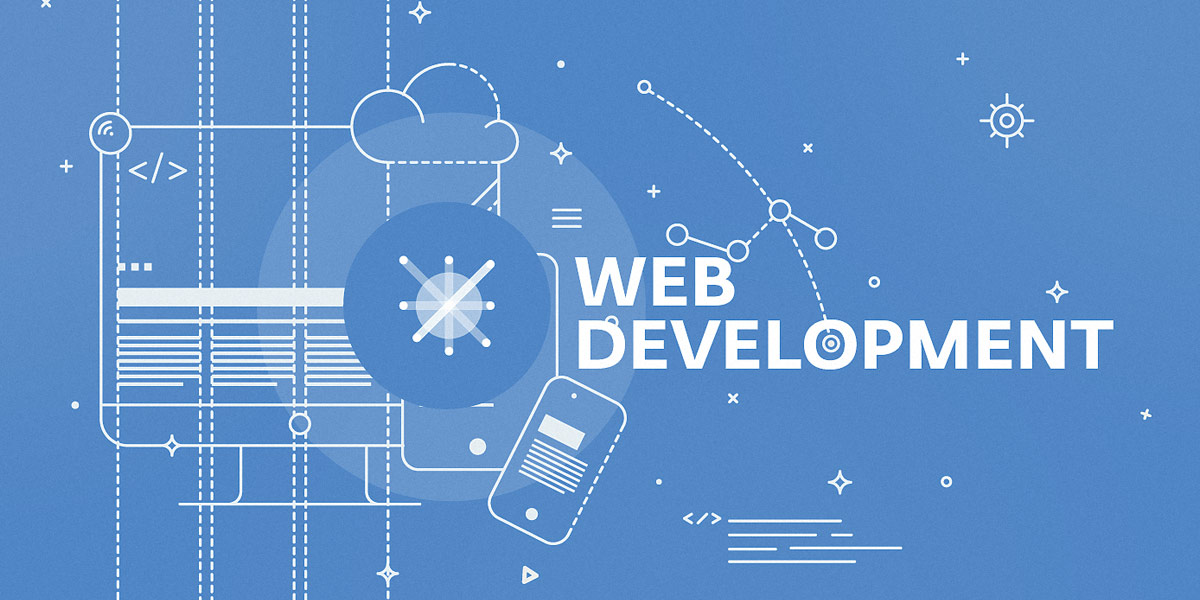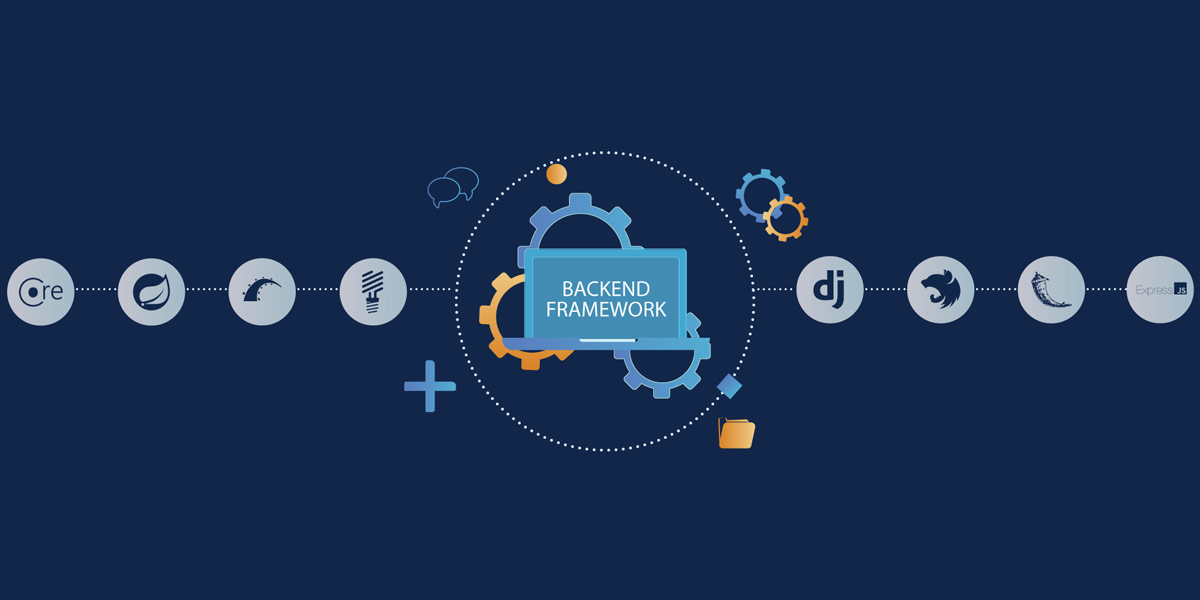
What is The Web Development?
Web development is a rapidly evolving field that plays a crucial role in today’s digital age. It encompasses the creation, implementation, and maintenance of websites and web applications. In this article, we will explore the various aspects of web development, including its definition, importance, process, key skills required, popular languages and frameworks, current trends, and prospects.

What is The Web Development
Importance of Web Development
Web development is essential for businesses, organizations, and individuals alike. A well-designed and functional website serves as a powerful tool to establish an online presence, showcase products or services, communicate with customers, and drive business growth. In today’s competitive landscape, a strong web presence is vital for success, making web development a critical aspect of any digital strategy.
Understanding Web Development
Definition of Web Development
Web development refers to the process of creating websites and web applications. It involves a combination of programming, coding, designing, and content creation to build functional and visually appealing web experiences. Web developers use various technologies, frameworks, and tools to bring websites to life and ensure their proper functioning across different devices and browsers.
Broad Categories of Web Development
Web development can be broadly categorized into two main areas: front-end development and back-end development.
Front-End Development
Front-end development focuses on the user-facing aspects of a website or web application. It involves writing code in HTML, CSS, and JavaScript to create the visual layout, design elements, and interactive features that users see and interact with directly.
Back-End Development
Back-end development deals with the server-side aspects of web development. It involves working with databases, servers, and APIs to manage data, handle user authentication, and perform complex operations behind the scenes. Back-end developers often use programming languages like Python, Ruby, PHP, or JavaScript (Node.js) to build the server-side logic.
Importance of Web Development in the Digital Age
In today’s digital age, web development plays a crucial role in enabling businesses to reach a wider audience, engage with customers, and drive online success. A well-designed website not only enhances brand visibility but also provides a platform to showcase products, services, and valuable content. With the increasing reliance on the internet for information and commerce, web development has become a key driver of business growth and customer satisfaction.

What is The Web Development: Understanding Web Development
The Process of Web Development
Web development involves a series of steps to ensure a website is built successfully and meets the desired objectives. Let’s explore the key stages of the web development process.
Steps Involved in Web Development
- Planning and Research: The initial stage involves understanding the project requirements, target audience, and objectives. Planning and research help define the project scope, create a timeline, and identify the necessary resources.
- Information Architecture: This stage focuses on creating a sitemap and defining the structure and hierarchy of the website’s pages. Information architecture ensures easy navigation and a logical flow of content.
- Wireframing and Prototyping: Wireframes and prototypes are created to visualize the layout, user interface, and functionality of the website. This step helps in gathering feedback and making necessary design adjustments before proceeding to the development phase.
- Design: In the design phase, the visual elements of the website are created. This includes selecting colour schemes, typography, and images, and creating a visually appealing user interface.
- Front-End Development: Front-end developers translate the design into code using HTML, CSS, and JavaScript. They focus on creating a responsive layout, implementing animations, and ensuring a seamless user experience across different devices.
- Back-End Development: Back-end developers work on the server-side functionalities of the website. They handle data management, user authentication, and server configurations. This stage involves writing server-side code using programming languages like Python, Ruby, PHP, or JavaScript (Node.js).
- Content Creation: Content is an integral part of any website. During this stage, relevant and engaging content is created and integrated into the website. This includes text, images, videos, and other multimedia elements.
- Testing and Quality Assurance: Before launching a website, thorough testing is conducted to ensure it functions properly across different browsers and devices. This includes checking for responsiveness, debugging code, and performing user testing to identify any usability issues.
- Deployment and Launch: Once the website passes all the tests, it is deployed to a live server and made available to the public. The launch involves setting up domain names, configuring servers, and ensuring all the necessary files and databases are in place.
- Maintenance and Updates: After the website is launched, it requires regular maintenance, updates, and security checks to ensure its smooth operation. This includes monitoring website performance, fixing bugs, and implementing new features or content as needed.
Read more about – Web Design Process

What is The Web Development: The Process of Web Development
Key Skills Required for Web Development
Successful web development requires a combination of technical skills, soft skills, and familiarity with various tools and technologies. Let’s explore the key skills that are essential for a career in web development.
Technical Skills Required for Web Development
- HTML: Hypertext Markup Language (HTML) is the foundation of web development. Proficiency in HTML is crucial for creating the structure and content of web pages.
- CSS: Cascading Style Sheets (CSS) is used to control the visual presentation of web pages. Knowledge of CSS is essential for styling and layout customization.
- JavaScript: JavaScript is a programming language that adds interactivity and dynamic functionality to websites. It is used to create interactive elements, perform client-side validation, and handle user events.
- Programming Languages: Depending on the back-end development requirements, knowledge of programming languages like Python, Ruby, PHP, or JavaScript (Node.js) is crucial for handling server-side logic and data management.
- Database Management: Understanding databases and proficiency in Structured Query Language (SQL) or NoSQL databases is essential for managing and manipulating data.
Soft Skills Required for Web Development
- Problem-Solving: Web developers often encounter complex challenges and technical issues. Strong problem-solving skills enable developers to identify and implement effective solutions.
- Attention to Detail: Web development requires meticulous attention to detail to ensure code accuracy, proper formatting, and adherence to web standards.
- Communication: Effective communication skills are essential for collaborating with designers, clients, and other team members. Clear communication helps ensure the project’s objectives are met and expectations are understood.
- Time Management: Web developers often work on multiple projects simultaneously, making time management skills crucial for meeting deadlines and delivering high-quality work.
- Continuous Learning: The field of web development is constantly evolving. Being open to learning new technologies and keeping up with the latest industry trends is essential for career growth and staying competitive.
Tools and Technologies Used in Web Development
Web developers utilize various tools and technologies to streamline their workflow and enhance productivity. Some commonly used tools and technologies include:
- Text Editors and Integrated Development Environments (IDEs): Examples include Visual Studio Code, Sublime Text, and Atom. These tools provide code editing features, syntax highlighting, and plugins for increased productivity.
- Version Control Systems: Tools like Git enable developers to track changes, collaborate with team members, and maintain a version history of their code.
- Package Managers: Package managers like npm (Node Package Manager) and Composer simplify the process of installing and managing dependencies in web development projects.
- Frameworks and Libraries: Frameworks like React, Angular, and Vue.js provide pre-built components and structures that streamline the development process. Libraries like jQuery offer reusable functions and code snippets for common tasks.
- Content Management Systems (CMS): CMS platforms like WordPress, Drupal, and Joomla provide a user-friendly interface for managing website content without extensive coding knowledge.
- DevOps Tools: DevOps tools like Docker and Jenkins facilitate the automation, testing, and deployment processes, enabling seamless integration between development and operations teams.

What is The Web Development: Key Skills Required for Web Development
Popular Web Development Languages and Frameworks
The web development landscape offers a wide range of languages and frameworks, each with its strengths and purposes. Let’s explore some popular choices in web development.
Overview of Popular Web Development Languages
- HTML: As mentioned earlier, HTML is the basic language for creating the structure and content of web pages.
- CSS: Alongside HTML, CSS is used for styling and layout customization.
- JavaScript: JavaScript is a versatile programming language used for adding interactivity and dynamic functionality to websites.
- Python: Python is a popular high-level programming language known for its simplicity and readability. It is widely used in web development, particularly for back-end development and scripting.
- Ruby: Ruby is another elegant and expressive programming language commonly used in web development. The Ruby on Rails framework, built with Ruby, is well-known for its productivity and ease of use.
- PHP: PHP is a server-side scripting language specifically designed for web development. It powers numerous websites and content management systems like WordPress.
- Java: Java is a versatile programming language used in various domains, including web development. It offers a strong ecosystem and is often utilized for enterprise-level web applications.
- C#: C# (pronounced C sharp) is a versatile programming language developed by Microsoft. It is widely used for web development with the ASP.NET framework.
Overview of Popular Web Development Frameworks
- React: React is a JavaScript library developed by Facebook. It is widely used for building user interfaces and single-page applications (SPAs).
- Angular: Angular is a TypeScript-based framework developed by Google. It provides a comprehensive solution for building large-scale, complex web applications.
- Vue.js: Vue.js is a progressive JavaScript framework known for its simplicity and flexibility. It is often chosen for small to medium-sized projects and offers seamless integration with existing applications.
- Ruby on Rails: Ruby on Rails, often referred to as Rails, is a full-stack web application framework built with Ruby. It emphasizes convention over configuration, enabling rapid development and clean code structure.
- Django: Django is a high-level Python web framework known for its simplicity and robustness. It follows the Model-View-Controller (MVC) architectural pattern and provides built-in admin functionality.
- Laravel: Laravel is a PHP framework that follows the MVC pattern. It offers an elegant syntax, a modular structure, and a wide range of features, making it popular among PHP developers.
Comparison of Different Web Development Languages and Frameworks
Choosing the right web development language or framework depends on various factors, including project requirements, developer preferences, scalability needs, and existing technology stacks. Here’s a comparison of some popular web development languages and frameworks:
| Language/Framework | Key Features | Pros | Cons |
|---|---|---|---|
| HTML | Structure and content of web pages | Easy to learn and implement | Limited functionality beyond structure and content |
| CSS | Styling and layout customization | Enables visual customization of websites | Can be complex for complex layouts and browser compatibility issues |
| JavaScript | Dynamic functionality and interactivity | Widely supported and versatile | Can be prone to browser compatibility issues and security concerns |
| Python | Clean syntax, readability, and extensive libraries | Rapid development and code readability | Not as performant as lower-level languages |
| Ruby | Expressive syntax and productivity | Productivity and ease of use | Performance may be a concern for extremely high-traffic websites |
| PHP | Specifically designed for web development | Extensive community and integration with popular CMS platforms | Can be prone to security vulnerabilities |
| Java | Strong ecosystem and enterprise-level support | Scalability and performance | Verbosity and learning curve for Beginners |
| C# | Developed by Microsoft, strong for enterprise use | Integration with Microsoft technologies and frameworks | Limited to Microsoft’s ecosystem |
Please note that this is just a brief comparison, and each language and framework has its strengths and weaknesses. The choice ultimately depends on the specific project requirements and the expertise of the development team.

What is The Web Development: Popular Web Development Languages and Frameworks
Current Trends and Future Prospects in Web Development
Web development is a dynamic field that constantly evolves with new technologies, frameworks, and trends. Staying updated with the latest trends is crucial for web developers to deliver modern, user-friendly websites.
Here are some current trends and prospects in web development:
- Responsive Web Design (RWD): With the increasing use of mobile devices, responsive web design has become a standard practice. Websites need to adapt and provide an optimal user experience across different screen sizes and devices.
- Progressive Web Applications (PWAs): PWAs combine the best features of websites and mobile applications. They offer fast loading, offline capabilities, and push notifications, providing a native-like experience to users.
- Single-Page Applications (SPAs): SPAs provide a seamless user experience by dynamically updating the content on a single web page, reducing page reloads and enhancing performance.
- Serverless Architecture: Serverless architecture abstracts the server infrastructure, allowing developers to focus on writing code without worrying about server management. It offers scalability, cost-effectiveness, and faster development cycles.
- Headless CMS: Headless CMS decouples the content management and presentation layers of a website. It provides flexibility and allows developers to use any front-end technology while still benefiting from a robust content management system.
- Artificial Intelligence (AI) and Chatbots: AI-powered chatbots are becoming increasingly popular for enhancing user engagement, customer support, and personalization on websites.
- Blockchain Technology: Blockchain is not limited to cryptocurrencies. It offers secure data storage, decentralized applications (DApps), and increased trust and transparency in web transactions.
- Voice Search Optimization: As voice assistants like Siri, Alexa, and Google Assistant gain popularity, optimizing websites for voice search queries becomes essential for improved search engine rankings.
- Cybersecurity and Privacy: With the rise in cyber threats and privacy concerns, web developers need to prioritize security measures such as HTTPS, encryption, and secure authentication to protect user data.
The future of web development looks promising, with emerging technologies like virtual reality (VR), augmented reality (AR), and the Internet of Things (IoT) opening up new possibilities for immersive and interconnected web experiences.

What is The Web Development: Current Trends and Future Prospects in Web Development
Conclusion
Web development is a multifaceted field that encompasses a wide range of skills, technologies, and trends. Understanding the basics of web development, including its definition, process, key skills required, popular languages and frameworks, and current trends, provides a solid foundation for anyone interested in pursuing a career in this dynamic industry. Whether you’re a beginner or an experienced developer, continuous learning and staying updated with the latest advancements will be crucial for success in the ever-evolving world of web development.
FAQs
What is web development?
Web development refers to the process of creating websites and web applications. It involves designing, building, and maintaining websites using various programming languages, frameworks, and tools.
What are the different types of web development?
There are several types of web development, including front-end development, back-end development, and full-stack development. Front-end development focuses on the user interface and user experience, while back-end development deals with server-side programming and database management. Full-stack development combines both front-end and back-end development skills.
What are the key skills required for web development?
Web developers require a combination of technical and soft skills. Technical skills include proficiency in programming languages like HTML, CSS, JavaScript, and knowledge of frameworks and libraries. Soft skills like problem-solving, communication, and teamwork are also crucial for effective web development.
What are the most popular web development languages and frameworks?
Some of the popular web development languages include JavaScript, Python, Ruby, and PHP. Frameworks like React, Angular, Vue.js, Django, and Ruby on Rails are widely used in web development due to their efficiency and ease of use.
What is the process of web development?
The process of web development typically involves several stages, including planning and designing the website, coding and development, testing, and finally launching the website. Each stage requires careful attention to detail and collaboration between designers, developers, and testers.
What are the most common web developer interview questions?
Web developer interviews often include questions about programming languages, frameworks, and web development concepts. Some common interview questions include:
- What is the difference between HTML and CSS?
- Explain the concept of responsive web design.
- How do you optimize website performance?
- Have you worked with any specific frameworks or libraries?
What qualifications do you need to become a web developer?
While a formal degree is not always necessary, most employers look for web developers with a bachelor’s degree in computer science, web development, or a related field. However, practical experience, a strong portfolio, and relevant certifications can also help in securing a web development job.
What does a web developer do?
A web developer is responsible for designing and building websites, web applications, and web services. They handle tasks such as writing code, implementing functionality, optimizing performance, and ensuring the website’s responsiveness across different devices.
How do I become a web developer?
To become a web developer, you can start by learning the basics of HTML, CSS, and JavaScript. Online tutorials, courses, and coding boot camps are excellent resources for acquiring web development skills. Practice building websites and projects to enhance your knowledge and create a portfolio to showcase your work.
What are the trends and future of web development?
Web development is a dynamic field that constantly evolves. Some current trends include the rise of progressive web applications (PWAs), the use of artificial intelligence (AI) and machine learning in web development, and the increasing adoption of serverless architecture. In the future, we can expect further advancements in mobile web development, improved user experiences, and increased focus on cybersecurity.

With over two decades of web design and development expertise, I craft bespoke WordPress solutions at FallingBrick, delivering visually striking, high-performing websites optimised for user experience and SEO.




